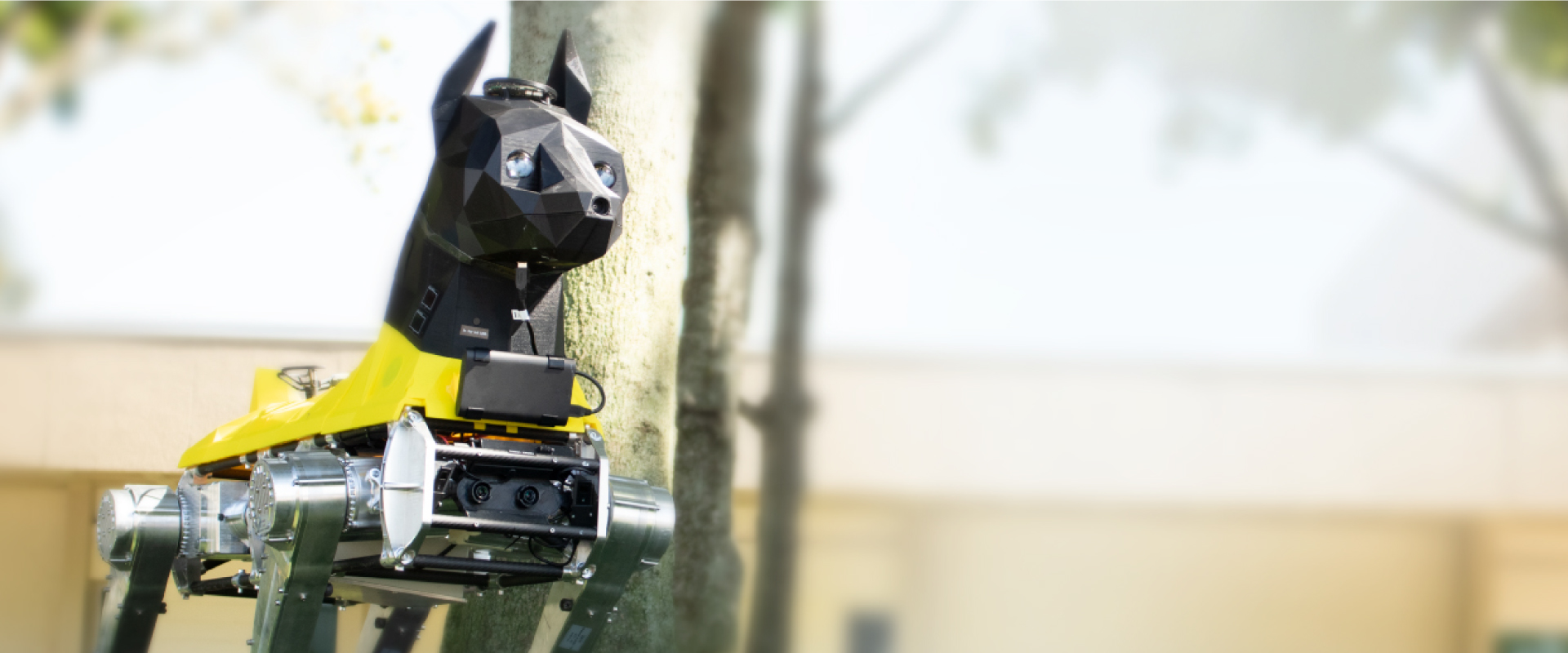Meet Astro
By Robin E. Taber
Robo dog might look like a cross between Batman and the Terminator, but this four-legged, mechanical canine is being trained to help people.
The Machine Perception and Cognitive Robotics Lab (MPCR) uses a combination of deep learning and artificial intelligence (AI) when programming the 100-pound super robot.
Astro navigates rough terrain and climbs over obstacles like a real dog. But AI gives Astro the ability to do things that neither animals nor humans can do; and go places we would not want animals or humans to go.
Its programming will allow Astro to quickly see and search thousands of faces in a database, smell the air to detect foreign substances or hear and respond to distress calls that fall outside a human’s audible range. Astro is being programed by the MPCR team to have a large database of experiences to draw from when it needs to make split-second decisions on the fly.
The team consists of Elan Barenholtz, Ph.D., associate professor in the Charles E. Schmidt College of Science and FAU Brain Institute member, William Hahn, Ph.D., a research scientist in the college and co-director of the lab, and their team of students that range from high school seniors to Ph.D. candidates. “We need psychologists, biologists, artists, sociologists. We need people with all sorts of skills and interests to contribute to this project; it’s not just about having engineers,” Hahn said.
Much like human learning, experiences for machines are logged into a neural network. “You have to start with data and train experience,” Barenholtz said. The robot is outfitted with 10 sensors that will consume environmental input and onboard Jetson TX2 graphics processing units for a combined 4 teraflops of computing power. “That’s four trillion computations a second.”
The lab was sought out by Drone Data’s Astro Robotics group for this rare opportunity because of the lab’s research into cognitive neuroscience, including behavioral, neurophysiological and embedded computational approaches to studying the brain. “These models, these deep learning layers, are inspired by the human brain,” Barenholtz said. “That’s what made this kind of revolution possible. The core ideas didn’t come from the computer science world, it came from the brain departments around the world. And that’s what we’re really excited about.”
“There are only a handful (eight) of these robots, and FAU has one. Google got the first one and FAU got the fourth,” said Hahn, adding that Martin Woodall of Astro Robotics is supplying the body and FAU is supplying the brain. Barenholtz emphasizes the need for Astro to be allowed to make mistakes and learn from them. “We’re putting that brain into a body and letting it engage in the real world. … We’re not going to tell it what to do all the time. It needs to explore its environment. It needs to grow up and figure out what kind of things lead to good outcomes or bad outcomes.”
Hahn would like to democratize the technology as soon as possible. He believes this could address many dystopian fears that surround AI. People anticipate worst case scenarios because movies have promoted those ideas to sell tickets, but visionaries see AI as a tool that helps humanity, solving some of our most difficult problems and moving mankind to heights not previously imagined.
What is Artificial Intelligence or AI?
Artificial Intelligence (AI) is when machines are programmed to think, analyze, solve problems and function like humans. An algorithm, a step-by-step procedure written in code, instructs a machine to access a database of input for any given task.
Human input comes from our five senses; sight, sound, smell, hearing and touch. Machines are programed to have similar senses
• They smell by gathering air samples and breaking down components, identifying compounds and comparing those compounds to a database for identification.
• They also see by recording with cameras and sensors. Initially a data-base is programmed into the machine by humans.
• The goal is that the machine starts to learn and add any additional programming it needs.
